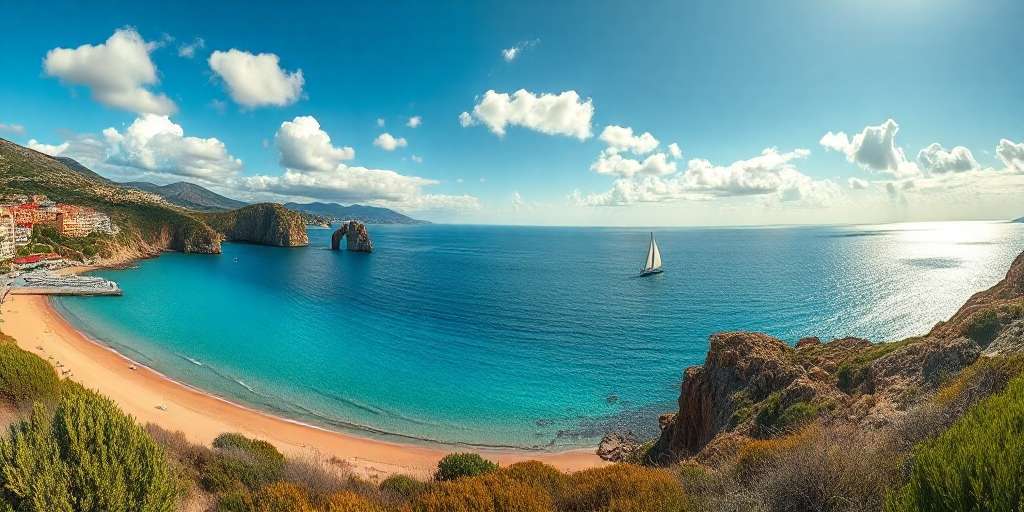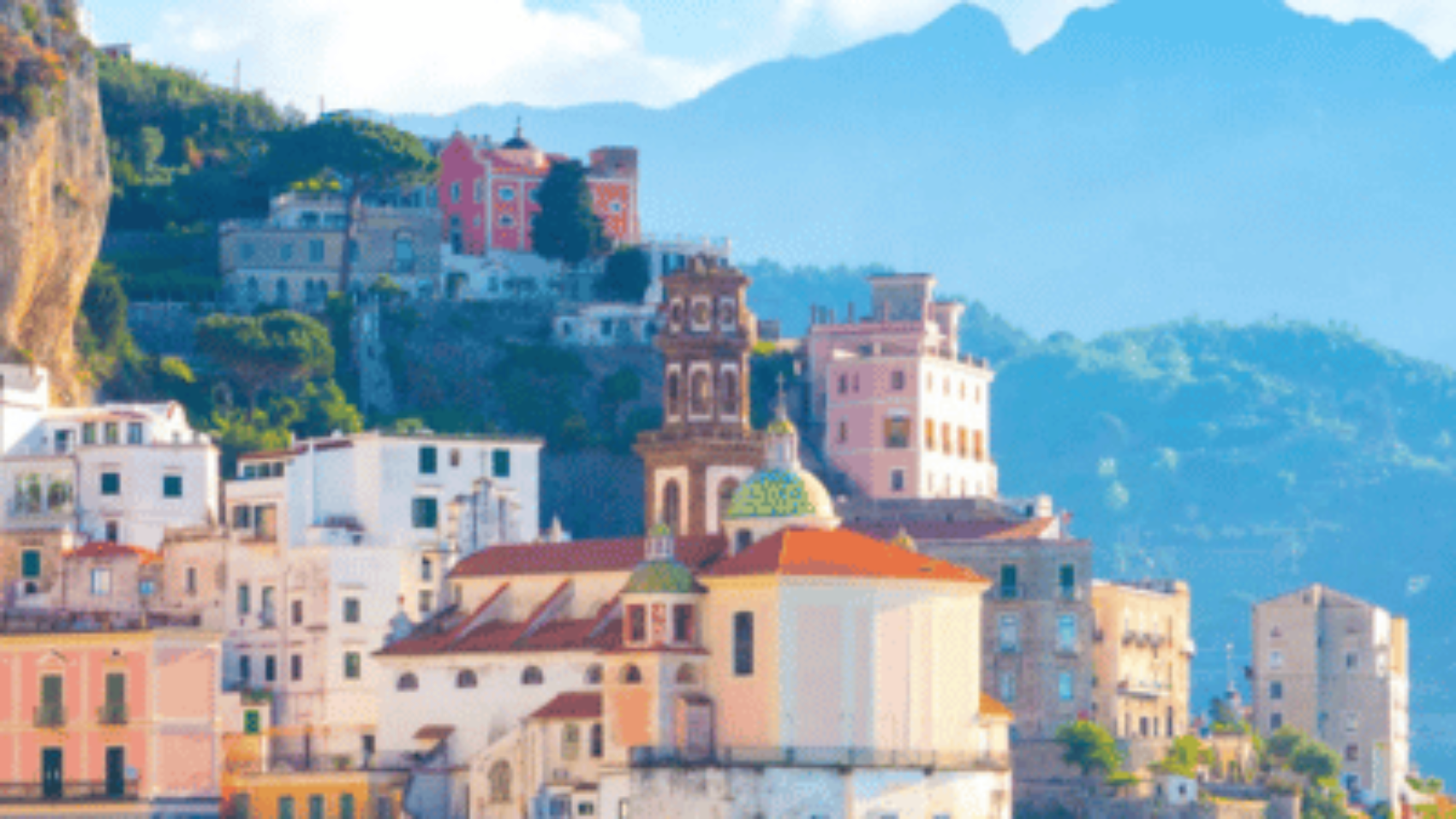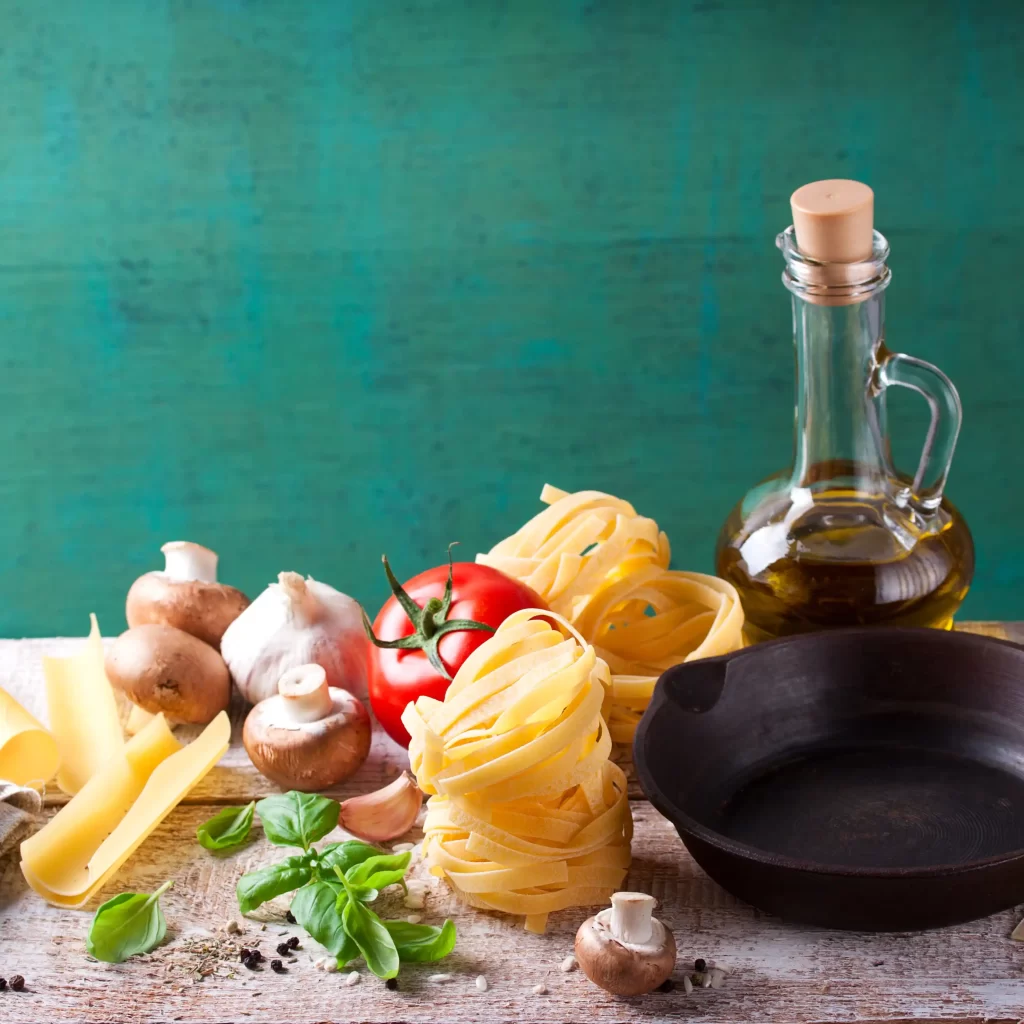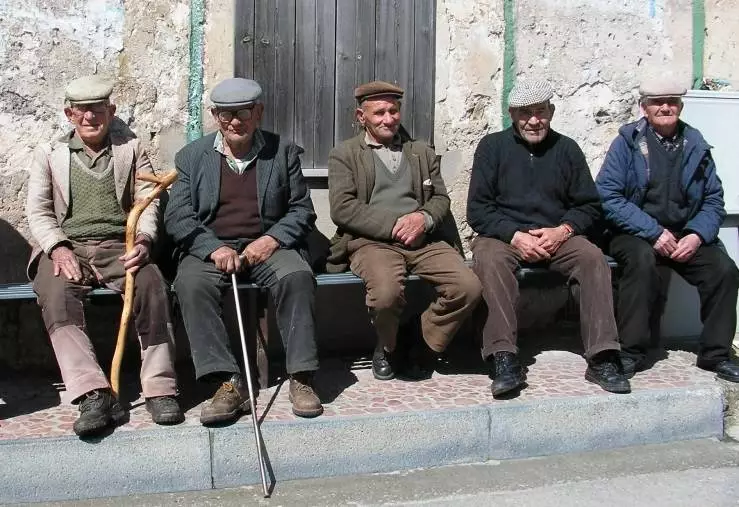Discover Sardinia, Italy: Embrace the Mediterranean Lifestyle and Blue Zone Traditions for a Healthier Life
Sardinia, Italy, is a unique island known for its stunning landscapes and vibrant culture. It is famous for having one of the highest concentrations of centenarians in the world, which makes it a significant location for studying longevity. The island’s lifestyle is influenced by its Mediterranean roots and Blue Zone traditions. These aspects contribute to the health and well-being of its residents, showcasing the benefits of local diets and strong community ties.

Exploring Sardinia: A Mediterranean Gem
Sardinia is a captivating island that boasts an array of breathtaking landscapes and rich cultural traditions. Its unique geography and vibrant community life make it a notable Mediterranean destination.
Geography and Landscapes
The island of Sardinia features an impressive diversity of geography that contributes to its allure. From rugged mountain ranges to stunning coastlines, the terrain is characterized by a mix of natural beauty that attracts visitors year-round. Key geographical features include:
- Mountains: The Gennargentu mountain range is the highest point in Sardinia, offering dramatic scenery and opportunities for hiking and exploration. The rolling hills and steep slopes provide a unique habitat that supports various flora and fauna.
- Coastline: With over 1,800 kilometers of coastline, Sardinia is famous for its pristine beaches and crystal-clear waters. The Costa Smeralda, in particular, is renowned for its stunning beaches and luxury resorts, while more secluded spots are found along the rugged eastern and western shores.
- Natural Parks: Sardinia is home to several national parks and protected areas, such as the Asinara National Park and the Gulf of Orosei, providing habitats for diverse wildlife and opportunities for ecotourism. These parks are excellent for observing wildlife as well as enjoying activities like kayaking and trekking.
Cultural Heritage
The cultural heritage of Sardinia is a rich tapestry woven from various influences over thousands of years. Its history is marked by ancient civilizations, vibrant traditions, and a unique language.
- Nuragic Civilization: One of the most significant aspects of Sardinian history is the Nuragic civilization, which flourished between 1800 and 500 BC. The island is dotted with megalithic structures known as nuraghes, which are ancient stone towers built for defense and ceremonial purposes. These structures stand as a testament to the island’s rich historical narrative.
- Language and Traditions: The Sardinian language, distinct from Italian, reflects the island’s unique identity. Cultural traditions, such as folk music and dance, are prevalent in village festivals, showcasing the island’s vibrant community spirit and connection to its heritage.
- Artisan Crafts: Sardinia is known for its artisanal crafts, including textiles, pottery, and filigree jewelry. Local artisans often employ traditional methods passed down through generations, maintaining the island’s cultural heritage while creating beautiful works of art.
Village Life and Community
The essence of Sardinian culture is deeply rooted in its village life, where community bonds play a critical role in daily existence. The island’s small communities foster a strong sense of belonging and interconnectedness.
- Social Gatherings: Sardinians often engage in communal activities, from sharing meals to celebrating traditional festivals. These gatherings are vital for strengthening social ties and ensuring that the wisdom of elders is passed down through generations.
- Farming and Traditional Practices: Agriculture remains a cornerstone of Sardinian life, with many families still practicing traditional farming methods. This connection to the land not only provides sustenance but also nourishes the cultural identity of the island. Residents often gather during harvest season to engage in shared labor and celebrate the bounty of the land.
- Rural Festivals: Various festivals celebrate everything from religious traditions to local produce. These festivals highlight the artistic expressions of the community through music, dance, and culinary offerings, reinforcing cultural continuity and community spirit.
Understanding Blue Zones
The concept of Blue Zones refers to regions of the world where people live significantly longer than average. Research has shown that these areas share common lifestyle characteristics that contribute to the well-being and longevity of their residents.
What Are Blue Zones?
Blue Zones are defined as specific regions where individuals enjoy a remarkably high life expectancy and a greater number of centenarians. The term was coined by Dan Buettner, an author and researcher who embarked on a quest to identify communities with exceptional longevity. His studies revealed that these communities possess unique environmental, lifestyle, and cultural factors that protect their residents against chronic diseases and promote healthy aging.
Characteristics of Blue Zones
While each Blue Zone has its own distinct cultural practices and dietary habits, several common characteristics have been identified:
- Natural Surroundings: Blue Zones are typically located in areas with clean air, access to nature, and a moderate climate, which encourages outdoor activities and a connection with the environment.
- Plant-Based Diets: Residents in Blue Zones commonly consume diets rich in whole, plant-based foods. This includes fruits, vegetables, legumes, and whole grains, which are high in essential nutrients and low in processed foods.
- Strong Social Support: Community connections and family ties are integral to life in Blue Zones. Regular social interactions create a sense of belonging and emotional support, which are linked to improved mental health.
- Active Lifestyles: Physical activity is naturally integrated into daily routines in Blue Zones, often through labor, walking, or leisure activities, promoting cardiovascular health and mobility.
- Low Stress Levels: Residents often lead relaxed lives with traditions that emphasize leisure, mindfulness, and enjoyment of life, contributing to overall lower stress and anxiety levels.
Original Blue Zones Around the World
There are five original Blue Zones identified worldwide, each providing unique insights into successful aging:
- Sardinia, Italy: Notably home to the highest concentration of male centenarians, Sardinia features a diet rich in whole grains, beans, and dairy, coupled with strong family ties and an active lifestyle.
- Okinawa, Japan: Known for its high number of female centenarians, Okinawa’s residents practice a primarily plant-based diet, engage in regular physical activity, and cultivate deep social networks.
- Nicoya Peninsula, Costa Rica: This region showcases a strong sense of purpose among its residents along with a diet centered on beans, corn, and tropical fruits, alongside an active lifestyle in a supportive community.
- Ikaria, Greece: Ikarians enjoy a diet of whole grains and fresh produce, maintain active lifestyles, and prioritize social interactions, which collectively contribute to their health and longevity.
- Loma Linda, California, USA: Among the Adventist community in Loma Linda, a vegetarian diet, regular exercise, and a focus on spiritual wellness foster a culture of health and longevity.
Longevity and Sardinia’s Unique Position
Sardinia stands out globally for its extraordinary number of centenarians and the unique factors contributing to their longevity. Understanding these elements reveals a fascinating interplay of lifestyle, diet, and cultural practices that have allowed the island’s inhabitants to thrive well into their later years.
Factors Contributing to Longevity
Several interrelated factors account for the remarkable longevity observed in Sardinia’s population. These include a healthy diet, an active lifestyle, strong social connections, and a relaxed approach to life.
- Healthy Diet: The traditional Sardinian diet is largely plant-based, rich in whole grains, fruits, vegetables, and healthy fats. This nutritional diversity plays a crucial role in maintaining overall health.
- Active Lifestyle: Residents engage in daily physical activities, often integrated into their work and leisure. The culture values movement, evident in practices such as walking and farming.
- Strong Social Ties: The emphasis on family and community fosters deep connections, which are vital for emotional well-being. Regular gatherings and celebrations strengthen these bonds, reducing feelings of isolation.
- Stress Management: A slower pace of life encourages residents to appreciate everyday moments. Engaging in cultural activities, spending time with loved ones, and connecting with nature contribute to a low-stress lifestyle.
Comparing Longevity and Life Expectancy
While life expectancy measures the average number of years a person is expected to live, longevity focuses on those who live significantly longer than average, particularly centenarians. Sardinians exhibit a distinct advantage in both areas.
Life expectancy in Sardinia is impressively high, often exceeding that of many countries. However, what is particularly striking is the disproportionate number of individuals who reach the age of 100 or beyond. Factors such as genetics, environmental influences, and lifestyle habits combine to propel Sardinians past the century mark.
Centenarians in Sardinia: What Sets Them Apart
The centenarians of Sardinia possess unique traits and habits that contribute to their extended years. These individuals often credit their longevity to a combination of lifestyle choices and social structures that prioritize health and wellness.
- Cultural Respect for Elders: In Sardinia, older individuals are revered and hold important roles within families. This respect fosters their social engagement and emotional well-being.
- Genetic Factors: Studies suggest that certain genetic markers prevalent in Sardinians contribute to their long life spans. These genetic traits might be linked to robust immune systems and other longevity-related health benefits.
- Active Engagement: Centenarians often maintain active lifestyles well into their advanced years. Whether tending to gardens or participating in community events, their physical engagement is key.
- Balanced Lifestyle: Many centenarians embrace a balanced life, combining work, leisure, and family time. This balance appears critical to their mental health and overall longevity.
The intertwining of these elements underscores the distinctive position Sardinia holds as a beacon of longevity, offering valuable insights into how lifestyle and environmental factors contribute to extended life.
The Sardinian Diet: Key to Longevity
The Sardinian diet is a remarkable blend of local ingredients, cultural traditions, and healthy eating practices that contribute significantly to the longevity of its residents. Emphasizing whole foods and traditional recipes, this diet maintains a balance that supports both body and soul.
Whole Grains and Their Benefits
Whole grains play a central role in the Sardinian diet. Staples like whole-grain bread, pasta, and cereals provide essential nutrients, fiber, and sustained energy levels. These grains are integral to daily meals and promote good digestion and cardiovascular health. By opting for whole grains over refined products, Sardinians benefit from lower calorie intake and higher nutritional value, which can help prevent chronic diseases.
Fruits and Vegetables: The Core of the Diet
The abundance of fresh fruits and vegetables is a defining characteristic of Sardinia’s culinary landscape. Seasonal produce is sourced locally, ensuring that meals are not only nutritious but also flavorful. Regular consumption includes:
- Tomatoes, a rich source of vitamins C and K.
- Fava beans, which are high in protein and fiber.
- Artichokes, known for their antioxidant properties.
- Wild greens, which provide a range of nutrients and add unique flavors to dishes.
This reliance on a variety of fruits and vegetables supports the immune system, promotes skin health, and lowers the risk of various lifestyle diseases. The colorful array of options also encourages culinary creativity and enjoyment of meals.
Dairy: The Role of Milk and Cheese
Dairy holds a special place in the Sardinian diet, particularly in the form of cheese and milk. The renowned Pecorino cheese, made from grass-fed sheep’s milk, is rich in essential nutrients.
Pecorino Cheese and Omega-3
Pecorino is celebrated not only for its distinct flavor but also for its health benefits. It is particularly high in omega-3 fatty acids, which are known to be beneficial for heart health and cognitive function. Regular consumption of this cheese provides crucial fats that help reduce inflammation, contributing to overall longevity.
Goat’s Milk and Health Benefits
Goat’s milk is another staple in many Sardinian diets. It is easier to digest than cow’s milk and contains beneficial components like probiotics, which promote gut health. Additionally, goat’s milk is less allergenic, making it suitable for individuals with lactose intolerance or dairy sensitivities. Its nutritional profile offers a creamy texture while supporting various essential bodily functions.
Moderate Meat Consumption and Traditions
Meat consumption in Sardinia is typically moderate, reserved for special occasions rather than daily staples. Traditional dishes often feature locally sourced meats, such as porceddu (roasted suckling pig) and various game meats. These meats are celebrated for their flavors but are consumed with mindfulness regarding portion sizes.
This practice aligns with the principles of a balanced diet, ensuring that meat enhances rather than dominates the meal. By keeping meat as a celebratory ingredient rather than a daily necessity, Sardinians enjoy it in ways that enrich the culinary experience while maintaining health.
Red Wine and Its Health Associations
Wine, particularly red wine, is a traditional beverage that accompanies many Sardinian meals. It is not just a cultural icon but also contributes to health in moderation.
Cannonau Wine: A Sardinian Secret
Cannonau wine, in particular, has gained attention for its high levels of antioxidants and flavonoids. Studies suggest that moderate consumption of this rich red wine is linked to lower levels of stress and better heart health due to its ability to improve blood circulation. The polyphenols found in Cannonau may also support cognitive function and metabolism.
Other Wines and Their Comparisons
While Cannonau is the star, other local wines also bring their unique benefits. Varieties like Vermentino and Monica offer different flavor profiles and health benefits, contributing to the diversity of wine culture in Sardinia. Balancing the enjoyment of these wines with an emphasis on quality over quantity is key to their role in the diet.
Wild Food Foraging: Connecting with Nature
Foraging for wild foods is a cherished tradition in Sardinia, offering a unique way to connect with nature and local flavors. Residents gather wild greens, herbs, mushrooms, and other natural edibles that are not typically found in supermarkets. This practice fosters a deep respect for the environment and supports sustainable living.
The act of foraging also encourages physical activity and outdoor engagement, strengthening the bond between the people and their land. It showcases the art of cooking with freshly sourced ingredients, paving the way for a diet that is both healthful and rooted in local heritage.
Lifestyle Factors That Promote Health
The Sardinian way of life plays a crucial role in promoting health and longevity among its residents. Several lifestyle factors, all deeply embedded in their culture, contribute to their overall well-being. These factors include active living, strong social bonds, and effective stress reduction practices.
The Importance of Active Living
Active living is a primary component of health in Sardinia. The island’s terrain and daily routines naturally encourage movement and physical activity. Maintaining an active lifestyle is not merely a fitness choice but an integral part of the culture.
Natural Movement in Daily Life
In Sardinia, movement is intertwined with daily tasks. Many residents engage in occupations that require physical effort, such as farming and shepherding. This labor-intensive lifestyle ensures that physical activity remains a constant throughout the day.
Walking: A Cultural Norm
Walking is not only a form of exercise but also a social activity among Sardinians. Families and friends often take long walks together, promoting both physical health and community ties. Research shows that many Sardinians walk an average of five miles daily, integrating this exercise naturally into their lifestyles.
Building Strong Social Bonds
A strong sense of community is essential for mental and emotional health in Sardinia. The island’s residents prioritize relationships, which profoundly impact their longevity. Family gatherings and regular social interactions contribute significantly to their happiness and well-being.
Family and Community Ties
Sardinian culture places immense value on family. Elders are revered, and family gatherings are frequent. These interactions foster a sense of belonging and purpose, significantly enhancing emotional health. The support systems created through robust family networks are instrumental in coping with life’s challenges.
Celebrating with Friends and Family
Social celebrations are deeply woven into Sardinian life. Whether it’s communal meals, festivals, or traditions, these events reinforce bonds among community members. The joy of coming together to celebrate strengthens relationships and highlights the importance of shared experiences.
Stress Reduction Practices
Managing stress effectively is a crucial aspect of the Sardinian lifestyle. The island’s pace of life encourages relaxation and appreciation of life’s simple pleasures, which significantly contributes to lower stress levels among its inhabitants.
Relaxed Pace of Life
Sardinia’s environment promotes a slower, more contemplative way of living. Residents often take time to enjoy nature, engage in meaningful conversations, and savor their meals. This relaxed approach contrasts sharply with the fast-paced lifestyles seen in many urban environments, resulting in a more balanced mental state.
Engaging in Leisure and Cultural Activities
Leisure activities are an essential part of daily life in Sardinia. Engaging in traditional music, dance, and crafts provides an outlet for creativity and relaxation. Such activities allow residents to unwind, express themselves, and connect with their heritage, ultimately enhancing their quality of life.
The Role of Genetics in Longevity
The genetic factors influencing longevity are vital for understanding the remarkable lifespan of Sardinians. Research has shown that genetics plays a significant role in how individuals respond to environmental stresses and their overall health.
Genetic Makeup of Sardinians
Sardinians possess a distinct genetic profile that has been shaped over thousands of years. The island’s population has remained relatively isolated, leading to less genetic dilution compared to larger populations. This isolation has allowed beneficial genes associated with longevity to proliferate within the community.
Several studies have identified specific genetic variations in the Sardinian population that could be linked to their extended lifespan. For instance, certain alleles related to cardiovascular health are prevalent among centenarians on the island. These genetic traits contribute to resistance against common age-related diseases.
Research on Longevity Genes
Scientific research focusing on longevity genes has identified a range of factors that may enhance health and lifespan. Among these, the FOXO3 gene has emerged as a significant player. This gene is associated with the regulation of cellular processes, including stress resistance and metabolism. Those with beneficial variants of FOXO3 tend to enjoy better health as they age.
- Studies suggest that Sardinians exhibit a higher frequency of certain FOXO3 variants compared to other populations.
- These genetic variations may offer protection against cardiovascular diseases, enhancing longevity.
- Research into other genes, such as those involved in inflammation and oxidative stress response, is ongoing and shows promising results.
Implications for Health and Aging
The implications of Sardinia’s unique genetic makeup for health and aging are profound. Understanding these genetic influences can help researchers develop targeted interventions aimed at promoting longevity. There is a growing interest in how these findings can be translated into actionable health strategies for the global population.
Furthermore, the integration of genetic insights into public health initiatives may bolster preventive measures against age-associated diseases. By focusing on the genetic factors that contribute to the longevity observed in Sardinia, there is potential for a more personalized approach to health care.
In summary, the role of genetics in promoting longevity is an essential component of understanding why Sardinians live longer lives. The unique genetic characteristics of this population, along with ongoing research, highlight the intricate relationship between our genetic makeup and our overall well-being.
Embracing the Sardinian Lifestyle
Embracing the Sardinian lifestyle involves integrating healthful practices that have been passed down through generations. This approach focuses on diet, physical activity, social bonds, and relaxation techniques that encourage overall well-being and longevity.
Adopting a Plant-Based Diet
The foundation of the Sardinian diet lies in its emphasis on plant-based foods. Whole grains, legumes, fresh vegetables, and seasonal fruits dominate local dishes, providing essential nutrients while promoting health. This approach reflects a commitment to using local, fresh ingredients, which not only supports well-being but also strengthens community ties through local agriculture.
Key components of the Sardinian diet include:
- Whole Grains: Whole-grain breads, pastas, and cereals serve as the primary sources of carbohydrates, offering sustained energy and nutrients essential for overall health.
- Fruits and Vegetables: A variety of vibrant fruits and vegetables are consumed, emphasizing seasonal produce that enhances nutrient intake and supports digestive health.
- Healthy Fats: Olive oil is commonly used, which is rich in monounsaturated fats that are beneficial for heart health.
Staying Active Every Day
Daily physical activity is ingrained in the Sardinian way of life. Unlike many contemporary lifestyles that tend to be sedentary, Sardinians incorporate movement into their daily routines, whether through farming, walking, or engaging in traditional practices.
Regular activity is vital for promoting cardiovascular health and maintaining a healthy weight. Some notable aspects include:
- Natural Movement: Everyday tasks require physical exertion, contributing to a lifestyle where movement is nearly seamless and embedded in daily life.
- Walking as a Cultural Norm: Walking is a prevalent practice, with Sardinians averaging several miles each day, making it a fundamental aspect of both leisure and transportation.
Fostering Social Connections
Community and family play pivotal roles in the Sardinian lifestyle. Strong social bonds are linked to greater happiness and health. The emphasis on relationships fosters a supportive environment that is crucial for well-being.
Highlights of social interaction in Sardinia include:
- Family Ties: Close-knit family structures are instrumental in ensuring emotional support, with regular gatherings that strengthen these bonds.
- Community Celebrations: Social events, such as festivals and communal meals, reinforce connections and create a sense of belonging, contributing to the emotional and mental wellness of the individuals.
Techniques for Stress Relief
The pace of life in Sardinia often remains relaxed, allowing residents to engage in stress-relieving activities. Techniques for stress management are an integral part of everyday life, promoting mental tranquility and overall health.
Common practices include:
- Embracing Leisure Activities: Traditional music, dance, and storytelling foster connections with cultural heritage while providing enjoyable outlets for relaxation.
- Time in Nature: The stunning natural landscapes offer spaces for reflection, peace, and physical activity, supporting mental health and reducing stress levels.
Incorporating Blue Zone traditions into daily life can enhance overall wellness and promote longevity. The following practical tips provide guidance on how to adopt these beneficial practices, focusing on nutrition, community building, and lifestyle balance.
Practical Tips for Incorporating Blue Zone Traditions
Eating Habits for a Longer Life
The Sardinian diet is rich in whole, plant-based foods that contribute significantly to health and longevity. To emulate this dietary pattern, consider the following approaches:
- Emphasize Whole Foods: Focus on consuming whole grains, legumes, fresh vegetables, and seasonal fruits. Incorporate items like whole-grain bread and pasta into meals to increase fiber intake.
- Incorporate Healthy Fats: Use healthy fats, such as olive oil, in cooking. Include nuts and seeds for added nutrients that support heart health.
- Limit Processed Foods: Minimize the intake of processed and sugary foods. Instead, opt for natural snacks such as fruit or raw veggies.
- Practice Moderation: Enjoy meat in moderation and reserve it for special occasions. This practice not only promotes health but also encourages appreciation for quality food.
- Red Wine in Moderation: When consuming alcohol, focus on moderate intake of red wine, particularly varieties rich in antioxidants, like Cannonau.
- Forage for Local Ingredients: Explore local markets for fresh produce and engage in foraging for wild herbs, greens, and mushrooms when possible.
Creating a Strong Community
Building robust social networks is crucial for emotional health and longevity. Strong community ties contribute to a sense of belonging and support, which are vital for maintaining well-being.
- Foster Family Connections: Prioritize family gatherings and maintain regular communication with loved ones. Shared meals and celebrations strengthen familial bonds.
- Engage in Community Activities: Participate in local events, workshops, or volunteering opportunities to meet new people and build connections within the community.
- Celebrate Together: Organize or partake in communal celebrations, such as festivals, to honor traditions and create lasting memories with friends and neighbors.
- Encourage Social Interactions: Make time for regular social engagements, whether it’s a coffee date with a friend or a neighborhood potluck. These interactions enhance emotional health and reduce feelings of isolation.
Benefits of a Balanced Lifestyle
A balanced lifestyle incorporates relaxation, leisure, and physical activity, all of which play a significant role in promoting health and longevity. Adopting these practices can lead to improved quality of life.
- Engage in Daily Physical Activity: Incorporate movement into daily routines, such as walking, gardening, or participating in group sports. This commitment to activity supports cardiovascular health.
- Practice Stress Reduction: Explore calming techniques such as mindfulness, yoga, or deep-breathing exercises to manage stress levels effectively.
- Embrace Leisure Activities: Set aside time for hobbies and leisure pursuits, whether it be reading, painting, or playing a musical instrument, to nurture creativity and relaxation.
- Connect with Nature: Spend time outdoors, whether hiking in the mountains or strolling along the beach. Connecting with nature can enhance mood and promote deeper well-being.
- Prioritize Sleep: Ensure adequate rest by establishing a regular sleep schedule that allows for quality rejuvenation each night.




